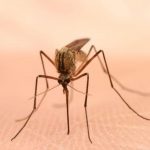
Many college kids are depressed and anxious, especially when they are a minority on campus or the first in their family to go to a university, a new study finds. These feelings may be particularly pronounced among minorities attending mostly white colleges, the researchers reported. In that setting, more than half of Black and Hispanic students reported feelings of mild depression and 17% more said they were moderately to severely depressed. “College life has its own sets of challenges — during COVID there were high rates of depression and anxiety suggesting that social support is an important part of college life,” said lead researcher Janani Thapa. She is an associate professor at the University of Georgia’s School of Public Health in Athens. “We must continue efforts on belonging, to make each and every student feel at home,” Thapa added. Interestingly, the researchers found that students at mostly white universities reported similar anxiety levels, regardless of race, with more than 3 in 5 students saying they experienced mild to severe anxiety levels. At historically Black colleges, students who weren’t Black also experienced higher rates of anxiety and depression. For the study, Thapa and her colleagues collected data on more than 3,000 students during the pandemic who answered questions about feelings of hopelessness, sleep problems and lack of energy. Thapa’s team found that students who were the… read on > read on >
























-300x200.jpg)













